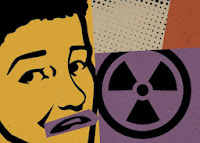It is that time of year again. The pink banners are waving strong, the walks are planned, the football players are dressed. Yes, breast cancer awareness month is upon us.
Cancer has the second highest mortality rate in the United States behind heart disease and breast cancer is the leading type of cancer in women. Over the past decade, many organizations have done a fabulous job in raising hundreds of millions of dollars for cancer treatment, research, and awareness. I do applaud the millions of people who have taken the time and spent the energy towards these heart felt causes. However, over the next four weeks I am going to ask some brutally honest questions that may challenge many of your beliefs and current understanding in order to bring to light an increased understanding of breast cancer and the restoration of health.
Over this month, I invite you to follow me through four fundamental discussion points based on our current societal understanding of cancer. Ask yourself what rings true and what could be improved upon. Shall we…?
Discussion Point 3: Chemicals vs. Curing |
| Adding Toxins Does Not Make A Person Healthy or Well |
Over this month, I invite you to follow me through four fundamental discussion points based on our current societal understanding of cancer. Ask yourself what rings true and what could be improved upon. Shall we…?
Last week I talked about preventing cancer (and other disease), but this week I want to address your choices if you do face the difficulty of a cancer diagnosis. Let me say that again, your CHOICES. As an individual with autonomy, you have the right to choose your healthcare options and the more information you have, the better your choices will be.
 |
| Cutting It Out Doesn't Solve The Problem |
Therefore, if I may put this as bluntly and boldly as possible, you and I have the cure for cancer! It is the awareness and respect that life is intelligent and life always favors and moves towards a state of health and balance. If we simply provide our body with all that it requires and remove from our body anything that is toxic, we will become masters of health restoration and promotion. We will have conquered this battle of cancer and many other diseases!
What do I do?
The good news is that your body is constantly striving towards health and the minute you decide to start placing your body in a healthy environment is the minute that you will begin to heal, whether you have a cancer diagnosis or just wish to prevent it.
Dr. Dan’s Do-It-Daily Tips:
Take a quality supplement. I take and recommend that my patients take 3000mg of omega 3 fish oil daily. These oils are essential in the diet and are not made by the body. They assist in cell membrane and nerve system integrity and are a foundational building block for health. Yes, it would be great to get it from fish, but our fish sources have been so toxified with heavy metals, that it is impossible to get the recommended omega 3’s without supplementing. I also recommend a quality multivitamin (stay tuned for future blogs on supplementation) that will cover all your B-vitamins, fat soluble vitamins (A,E,D, and K), and plenty of trace minerals (i.e. Calcium, selenium, iodine and zinc).
Take a quality supplement. I take and recommend that my patients take 3000mg of omega 3 fish oil daily. These oils are essential in the diet and are not made by the body. They assist in cell membrane and nerve system integrity and are a foundational building block for health. Yes, it would be great to get it from fish, but our fish sources have been so toxified with heavy metals, that it is impossible to get the recommended omega 3’s without supplementing. I also recommend a quality multivitamin (stay tuned for future blogs on supplementation) that will cover all your B-vitamins, fat soluble vitamins (A,E,D, and K), and plenty of trace minerals (i.e. Calcium, selenium, iodine and zinc).
For the past 20 years, our answer to cancer has been to throw money at the problem with unwavering commitment to reducing cancer rates. We are often reminded that the definition of insanity is to do the same thing over and over, expecting a different result. This unwillingness to change has only led to more cancer, decreased quality of life, and death. It is time for you and I to take full responsibility for our health as an individual. As a society, we must start asking better questions to get the answer we are looking for - better health. It’s not an understatement to say lives depend on it.
Check back next week for our final discussion point - point title here - and another Dr. Dan's Do-It-Daily Tip.
Dr. Dan Turo is the owner and chiropractor of Turo Family Chiropractic located in the North Hills of Pittsburgh, PA. Follow him on facebook and twitter.
Check back next week for our final discussion point - point title here - and another Dr. Dan's Do-It-Daily Tip.
Dr. Dan Turo is the owner and chiropractor of Turo Family Chiropractic located in the North Hills of Pittsburgh, PA. Follow him on facebook and twitter.















